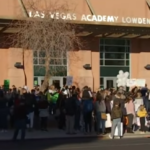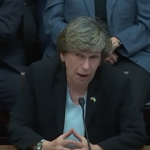The Courts’ Redefining Marriage Movement
At the Family Research Council in Washington, D.C., William Duncan, the executive director of Marriage and Family Law Research Grant at BYU, tracked marriage language over the past fifty years in several U.S. Supreme Court cases, from Griswold v. Connecticut in 1965 to the current case facing the court over same-sex marriage.
Marriage was relatively uniform and widely accepted as a union between a man and woman whose goals were united. But, the Griswold decision was a “key shift” and “a tentative move away from the past” as the court’s language changed from marriage’s goal as being one of security to one of being “hopeful” toward the future of the institution. As Duncan noted, “we see the seeds of hauling out” marriage in the Griswold court decision. Specifically, the court referred to marriage by way of using the word “association,” as if marriage was an agreement of “two individuals who sort of, obviously in league with one another…it is unclear [what the court intended].”
Courts work based on precedents from other cases, and Griswold laid the groundwork for subsequent cases. In 1972, Eisenstadt v Baird “codifies this new understanding of marriage” being an association and not a union. Duncan said, “The key issue here is the court is saying there is really no distinction between marriage and non-marriage” of individuals. Instead, the “family itself is reduced to a lifestyle choice” and an individual one. No longer was family or marriage considered an entity. In the words of the court decision, “the marital couple is not an independent entity with a mind and heart of its own.” The justices rationalized this new definition of marriage because the individual should be “be free from unwarranted governmental intrusions” such as deciding to have a child or not. Other decisions that built on Griswold and Eisenstadt in slowly redefining marriage and family were:
- Roe v. Wade (1973)– the case that legalized abortion in the U.S.;
- Department of Agriculture v. Moreno (1973) – the courts struck down the restriction on food stamps being distributed to households of “unrelated persons”; ;”
- Planned Parenthood of Central Missouri v. Danforth (1976) – a case which invalidated the requirement to have written spousal or parental consent for an abortion;
- Carey v. Population Services International (1977) – a case where the courts said it was unconstitutional to limit who can distribute contraceptives, as it was limited to licensed pharmacists previously;
- Zablocki v. Redhall (1978) – where the courts no longer issued an order for a couple to obtain a marriage license, where the potential spouses would have to be up-to-date on child support payments;
- Turner v. Safley (1987)– prisoners had a right to get married without approval of the prison warden as protected under due process clause.
Now, “marriage is now a choice of two autonomous individuals” and even that legal definition is becoming blurred. Today, “the court becomes a vanguard of the revolution” regarding the definition of marriage and sexual values, Duncan said, and it is sad to see how “legal principles…have been abandoned in other cases” such as the ones mentioned above.





